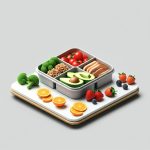Common Water Bottle Sizes: A Quick Guide
The most common single-serving water bottle size in the US is 16.9 fluid ounces (500 ml). However, water bottles are available in a wide range of sizes to suit different needs and preferences. This guide provides a quick overview of common sizes and helps you choose the right one for you.
Single-Serving Sizes
These sizes are perfect for individual consumption and on-the-go hydration:
| Size (oz) | Size (ml) | Best For |
|---|---|---|
| 8 | ~240 | Small children, quick sips, small bags |
| 12 | ~355 | Lunchboxes, moderate hydration needs |
| 16.9 | 500 | Standard single serving, everyday use, portability |
| 20 | ~590 | Slightly larger serving, reusable bottles |
Larger Format Bottles
For longer outings or when you need more water readily available:
| Size (oz) | Size (ml) | Best For |
|---|---|---|
| 24 | ~710 | Increased hydration needs, sports |
| 32 | ~950 | Longer activities, workouts |
| 1 Liter (~33.8 oz) | 1000 | Extended outings, metric preference |
| 1.5 Liters (~50.7 oz) | 1500 | Sharing, extended duration, all-day hydration at home/office |
| 1 Gallon (128 oz) | 3785 | Maximum hydration, minimal refills |
Why 16.9 oz?
The prevalence of the 16.9 oz (500 ml) bottle may be due to several factors. Some researchers suggest its popularity stems from the convenient conversion between imperial and metric systems, simplifying international trade and manufacturing. It is a practical amount to consume in one sitting, and may also be related to standard vending machine slot sizes. Consumer preference and manufacturing efficiency probably play a role as well.
Choosing the Right Size
The ideal water bottle size depends on individual factors like activity level, daily routine, and personal preference.
- Activity Level: More active individuals likely require larger bottles to stay adequately hydrated.
- Daily Routine: Easy access to refills might allow for smaller bottles, while limited access suggests a larger capacity.
- Personal Preference: Some prefer frequent small sips, while others opt for less frequent, larger drinks.
Consider practicalities like cupholder compatibility and whether the bottle fits comfortably in your bag. If you’re aiming to increase your water intake, a larger bottle might be beneficial. Ongoing research is exploring how visual cues can influence hydration habits. While more study is needed, early findings suggest that having a larger bottle readily visible might subtly encourage us to drink more.
FAQs: Common Water Bottle Questions
Q: What’s the difference between fluid ounces (fl oz) and ounces (oz)?
A: Fluid ounces measure volume, specifically liquid volume, while ounces measure weight. With water, the difference is negligible in everyday use, but it’s important for other liquids.
Q: How much water should I drink daily?
A: There’s no single answer, as hydration needs vary based on factors like activity level, climate, and overall health. General guidelines suggest eight 8-ounce glasses per day, but many experts now suggest tailoring intake based on individual needs. Consulting with a healthcare professional is always recommended for personalized advice. Ongoing research continues to refine our understanding of optimal hydration.
Q: Are there different types of plastic used in water bottles?
A: Yes, different plastics are used, each with its own properties. Some, like PET (polyethylene terephthalate), are generally considered safe for single use but are not recommended for repeated refills due to the potential leaching of chemicals. Others, like HDPE (high-density polyethylene), are more durable and better suited for reuse. Look for BPA-free bottles to minimize potential health risks.
Choosing the right water bottle size is a personal decision. By considering your lifestyle, activity levels, and hydration goals, you can find the perfect bottle to keep you refreshed throughout the day.
- The Best Bento Box Price For Your Perfect Packed Lunch - December 15, 2025
- Bento Box Shopping Tips for Smart and Stylish Lunch Prep - December 14, 2025
- Bento Box Trays Streamline Restaurant Meal Presentation and Transport - December 13, 2025










